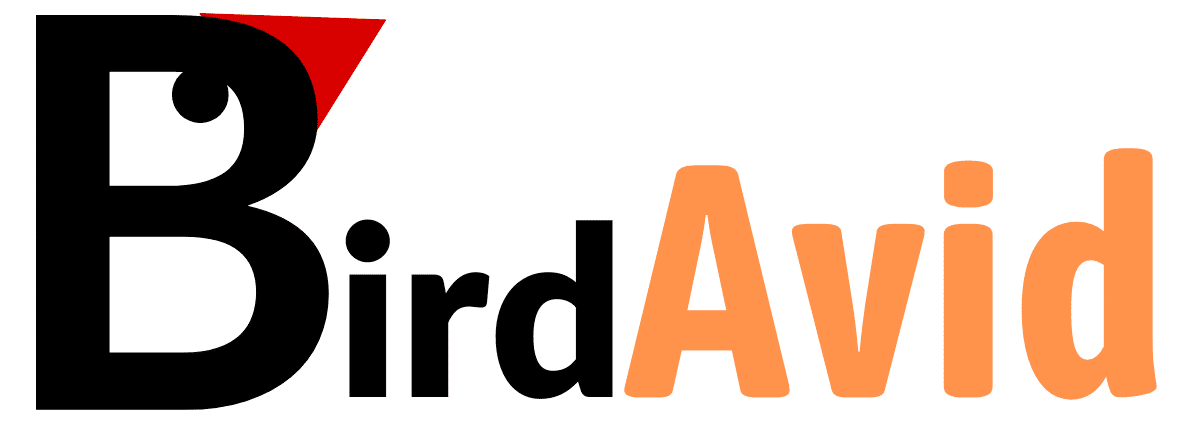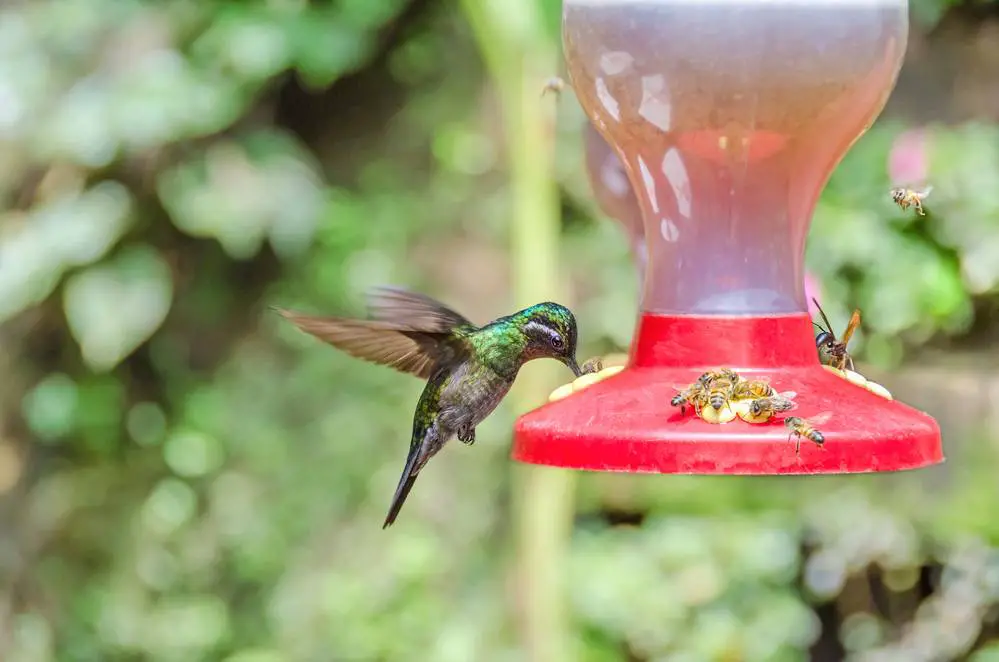Are you frustrated by the constant wasp problem at your hummingbird feeders? Then you’ve come to the right place!
Update: Recently, I came across this hummingbird feeder that’s super effective at keeping wasps away (bonus: also bees and ant-proof). You might like checking it out!
Key Takeaways:
- Wasps are attracted to yellow, so try to have a hummingbird feeder with a different color, which is completely red.
- Ensure no other sources attract wasps to your yards – such as opened trash bins and cans. For example, a sturdy outdoor trash can with lid like this one would work well.
- If nothing works, set up another feeder in a bright, open area that acts as a substitute feeder to engage the wasps and keep them away from the main hummingbird feeder.
- You can also use specialized feeders that keep the nectar away from the reach of the wasps but still easily accessible for your hummers – like the saucer feeders.
Author’s Note: The best strategy to keep wasps away is to keep the wasps busy with a substitute feeder or to use a special non-wasp friendly feeder saucer-shaped feeder like this one (available on Amazon).
Other methods listed in this guide can also work. But those two strategies are the best and most practical approaches to deal with the wasp issue.
Read on till the end to take a closer look at all the top 9 strategies for keeping wasps away from your hummingbird feeders.
#1. Choose The Feeder With Unattractive Colors For Wasps
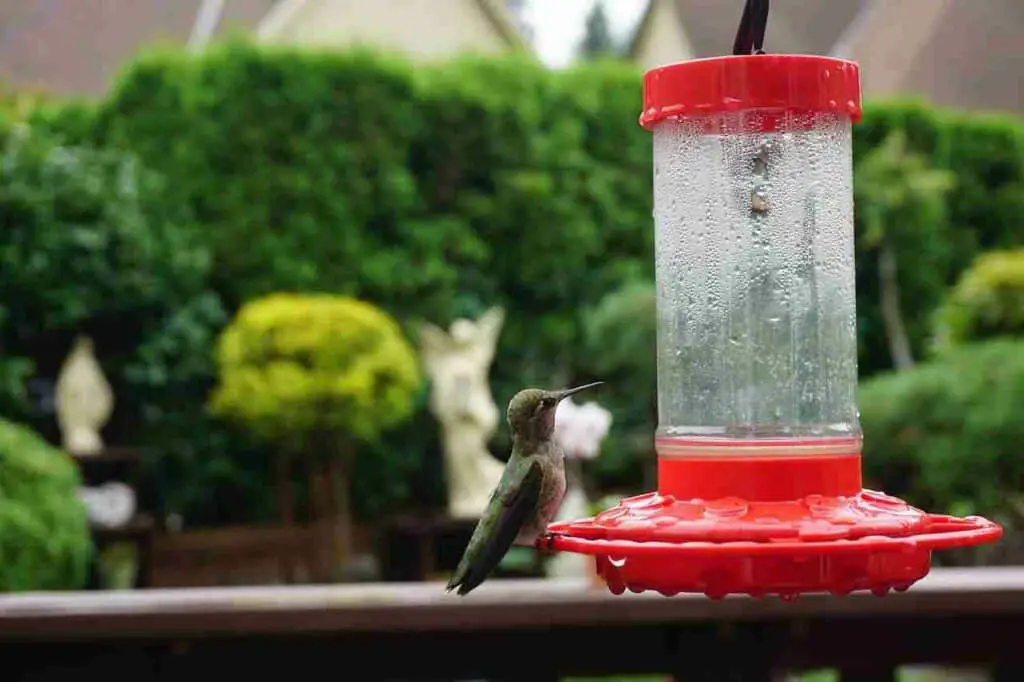
Wasps may not be as common as bees and butterflies among visitors to attractive flowers. However, wasps have decent color vision, spanning from the yellow to the ultraviolet ends of the visible spectrum.
Flowers like sunflowers and marigolds are generally linked with the color yellow, and it turns out that wasps are also drawn to that hue. So you see, wasps have an important ecological role as pollinators, and the vivid coloring of objects resembles those of flowers.
Adult wasps get their nutrition from the nectar flowers provide, and they heavily depend on their color detection skill to find nectar sources.
Moreover, note that wasps aren’t only drawn to the color yellow; they have also been shown to be drawn to green, white, purple, and pink.
Wasps, like trichromatic insects, can see and distinguish between these hues pretty effectively. Wasps may be drawn to any or all of these colors, but some are more selective.
What kind of natural habitat, prey, or food supply a particular species of wasp has will determine what kind of color the wasp will get attracted to.
Fortunately, wasps have trouble seeing low-frequency colors like “red.” So one of the best ways to reduce the bird feeder’s appeal to wasps, and hence increase the likelihood of them staying away, is to use a hummingbird feeder of red color.
Learn Also: How Far Apart Should You Place Hummingbird Feeders?
#2. Use Special Feeders That Keep Nectar Away From Wasps But Not From Hummers
Certain hummingbird feeder designs are less favorable to insects than others. They are effective in discouraging wasps.
One of the ideal styles of hummingbird feeders to prevent wasps is the saucer-shaped feeder like this one available on Amazon. These garden staples are simple to maintain and replenish, and the sugar water is kept far below the feeding holes, where the wasps can’t get to it easily.
Bird feeders with ant moats and bee guards are two more insect-proof feeder designs you can use to keep wasps away.
So, in short, using these types of special feeders is also one of the effective strategies to keep wasps away. Since the wasps won’t get access to the nectar, eventually, they will try to find other food sources.
#3. Setup Another Alternate Feeder To Keep Wasps Busy And Away

If you wish to reduce the number of wasps at your hummingbird feeders without harming them, you can do it by providing a new feeder filled with a more enticing sugar water solution.
Put up the supplementary feeder in a bright spot far from the area you want to fill with hummers. If the wasps have taken shelter in the neighborhood, they may just visit the closer feeder instead of venturing all the way to the main feeder.
#4. Avoid Things That Attract Wasps In Your Yard
Wasps have a sweet tooth and are drawn to anything that contains sugar, particularly open bottles of soda or juice cans.
They also enjoy honey, jams, and other products of a similar kind. Moreover, they are drawn to items high in protein, such as meat and eggs; for this reason, it is essential to keep trash cans well sealed and to dispose of food leftovers in the appropriate manner.
#5. Reduce The Chances Of Attracting Wasps By Keeping The Feeder Clean
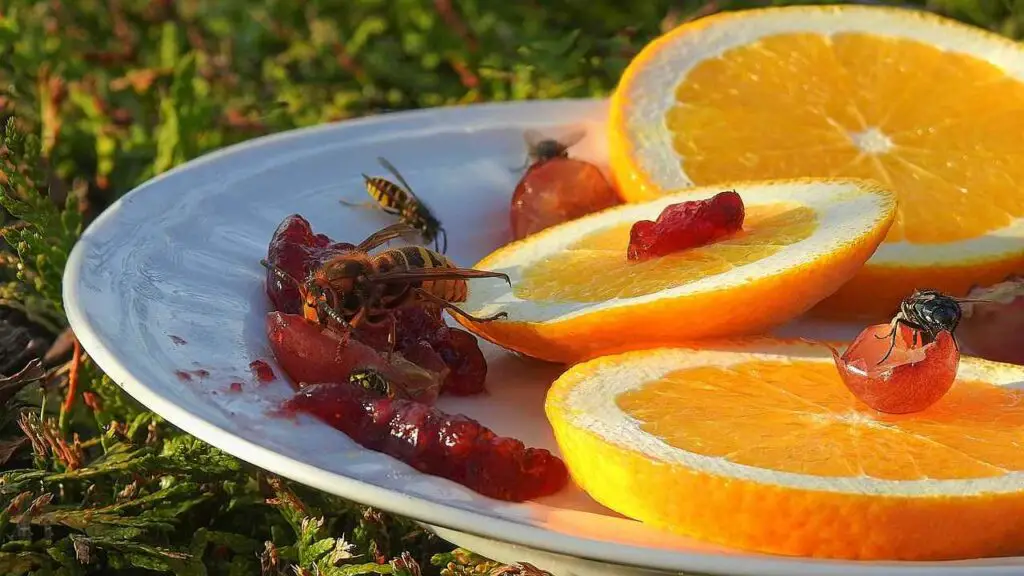
If the hummingbird feeder is leaking from places and the nectar is dripping outside, wasps are more likely to get attracted.
In fact, it has been found that wasps are more attracted mainly because of the smell compared to the visual signals.
So if you are using a broken or leaky nectar bottle in the hummingbird feeder, ensure to repair it or replace it with a new one.
#6. Keep Your Hummingbird Feeders Away From Bright Spots
Leaks in the hummingbird feeder container will also speed rapidly when the pressure within the container rises due to the sun warming the nectar and any air inside. So try to choose a shaded location in your yard for locating the hummingbird feeders.
Because most flying insects, such as wasps, prefer bright spots, placing nectar feeders in a shady area will discourage insects from visiting them. This will also help the nectar stay cold and prevent it from fermenting too quickly.
See Related: Can Hummingbirds Drink Cold Nectar?
#7. Change The Feeder Location To Confuse Wasps
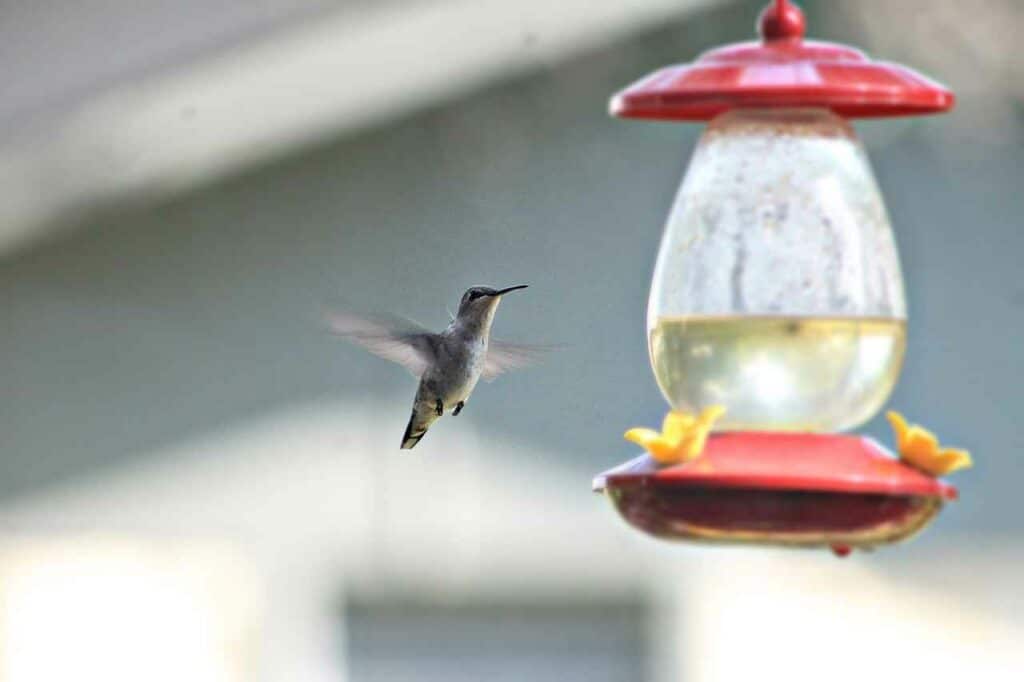
Hummingbirds will return to a feeding site repeatedly if they discover it to be lucrative.
The hummingbird’s memory is exceptional, allowing it to recall every flower and feeder it has ever visited, as well as the exact time it took each bloom to refill. In comparison to the rest of its body, the hummingbird’s brain is quite big – at 4.2% of its total weight.
But if we talk about insects, they will only go to easily accessible food sources and will not bother to look for new feeders if they have been moved.
By just shifting the feeder a short distance, you can reduce the number of insects that arrive without scaring away the hummingbirds.
Wasps and other insects are not particularly perceptive, and they aren’t hardwired to return to the same area where they last saw nectar. If the meal suddenly vanishes, it may never return to the area in hopes of discovering its new position.
But on the other hand, the hummingbird will hardly even realize that it was relocated.
To summarize this point, when a bird feeder is moved, the birds will find it, but the insects will have a hard time doing the same. So, this method can work effectively in protecting your hummingbird from insects like wasps.
#8. Plant Wasp Repellant Plants Around The Hummingbird Feeder
Putting in some wasp-repellent plants is a quick and easy solution to deal with this nuisance. Besides adding beauty to your yard, they will also help keep pesky insects at bay with their strong smell.
Many of them are common garden plants and beneficial herbs, such as colorful marigolds and elegant eucalyptus.
Ideal for use in flavorful foods and medicinal cures, these plants may have a significant positive impact on our lives and deserve a prominent spot in our gardens; they also do a wonderful job of keeping wasps at bay, which is a nice bonus.
Place them in strategic locations throughout your yard and house once you’ve potted them in pots or hanging baskets.
Some aromatic plants, such as mint, thyme, and wormwood, are also well-known for deterring wasps. Put them in places where there is a lot of wasp activity to get the best effects.
#9. Use Wasps Traps As A Last Resort
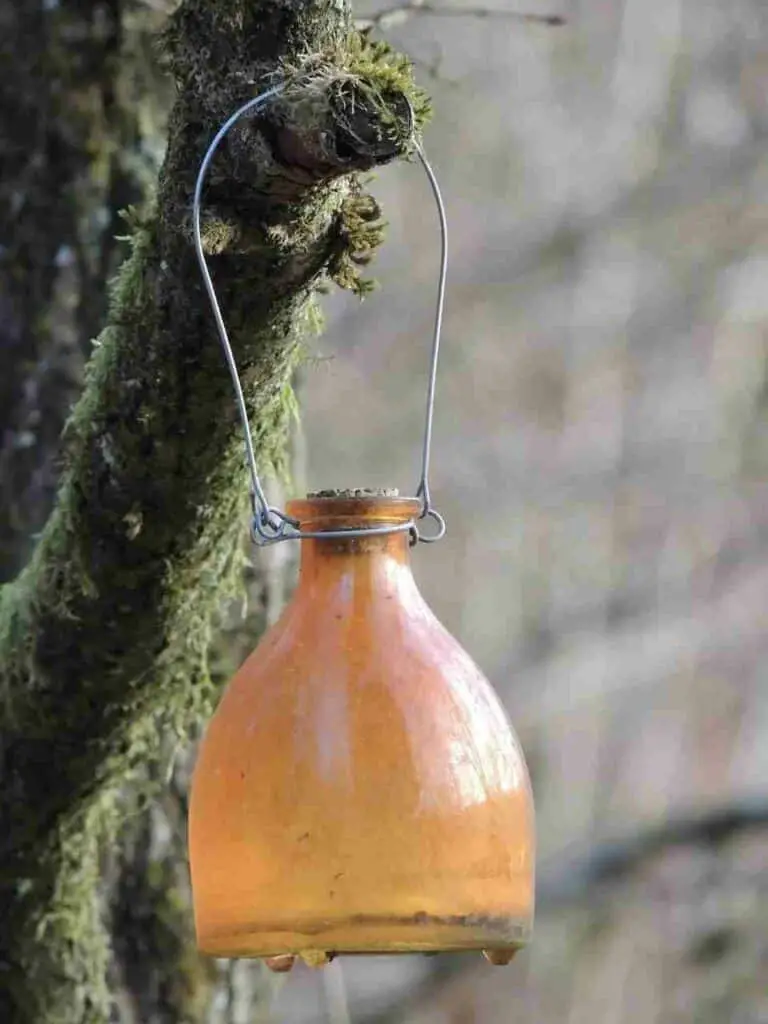
There is a wide range of stinging insect traps on the market, from those sold in specialty stores to those that can be made at home using common household items, but they all work on the same principle.
Baits such as sugar water, dish soap, or vinegar are used to entice wasps and hornets into a trap chamber. They fall into the trap and are unable to escape; hence, they die there.
Wasps traps are effective in killing wasps, but they also come with some downsides.
Wasp traps have the disadvantage of drawing in even more insects. You can’t assume that the wasps you catch in your trap are the same wasps that live on your land since the bait will attract any stinging insect within a certain distance of the smell.
Attracting wasps that weren’t there before might make the situation worse. Another major drawback of wasp traps is that they only catch foragers (and not the queen) that are on their way back to the nest with food.
The queen will keep having babies as long as she is protected inside the nest. You may eliminate as many of the wasps’ workers as you want, but provided the queen is still there; the colony will continue to thrive.
However, if you’ve exhausted all other options and are really fed up with the wasp problem, this technique might be an effective last resort.
Just be sure to use this method sparingly because they are beneficial to the ecosystem because of their role as a predator and crucial pollinators.
Why Do Wasps Attack Hummingbird Feeders?
The short answer is Nectar!
Wasps have a varied diet, which includes things like:
- Nectar
- Fruits
- Spider
- Larvae
- Honey
Wasps of different ages and species have different dietary needs. While some species primarily feed on flower nectar, others are active predators and/or foragers.
Generally speaking, adult wasps prefer sweet and sugary foods. They seek a variety of food and graze for vegetation, both of which can fulfill their appetites. And it is due to this fact the sweet nectar inside a hummingbird feeder becomes an easy target for them.
Wasps help maintain healthy ecosystems by reducing insect populations, but people avoid them due to the pain and discomfort caused by their stings. When people notice wasps or a wasp nest near their house or yard, they naturally get worried about wasp management.
What To Consider While Keeping Wasps Away From Hummingbird Feeders?
- Avoid any oily substance as a remedy to get rid of wasps.
- Also, steer away from petroleum jelly-based products to deter wasps and other insects.
Why? Because they can stick to the hummingbird feeders and cause them harm and make them struggle to fly.
Apart from these, also avoid any insecticides or pesticides because, again, they can be harmful to the hummingbird.
So now you know about how to keep wasps away from hummingbird feeders, but what about ants? Check out this guide on the 4 smart ways to keep ants off humming feeder to learn more.
FAQs:
#1. What Repels Wasps But Not Hummingbirds?
Essential oils (plants extracts) like Tea Tree Oil is effective in repelling wasps but doesn’t trouble Hummingbirds. You can apply the oil around the feeder so that wasps are repelled away but just be sure to not apply in any region where it would come in contact with hummingbirds.
Here’s one of the best tea tree oils (available on Amazon).
#2. Do Hummingbirds Eat Wasps?
Hummingbirds are not known to eat wasps even though they many eat insects apart from nectar. One of the main reasons for that is because wasps are too big to consume. Hummingbirds mainly eat small insects like mosquitoes and ants.
#3. Do Wasps Scare Away Hummingbirds?
Although not always, but wasps can scare away hummingbirds at times because they tend to chase hummers. Also, wasps can make the hummingbirds feeders messy. So it is essential to get rid of wasps from hummingbird feeders.
#4. Are Wasps Attracted To Hummingbird Feeders?
Wasps are attracted to hummingbird feeders mainly because of the easy access to sweet nectar. However, they are also attracted to hummingbird feeders because of the bright yellow color which resemble to flowers. Red color is known to be unappealing for wasps so having red-colored feeders is a good way to keep wasps away.
Sources:
- Shuttleworth, Adam, and Steven D. Johnson. “The importance of scent and nectar filters in a specialized wasp‐pollination system.” Functional Ecology 23.5 (2009): 931-940.
- University College London. “Wasps are valuable for ecosystems, economy and human health (just like bees).” ScienceDaily. ScienceDaily, 30 April 2021. <www.sciencedaily.com/releases/2021/04/210430093209.htm>.
- “Tea Tree Oil.” NCCIH, www.nccih.nih.gov/health/tea-tree-oil.
- “What Are Essential Oils, and Do They Work?” What Are Essential Oils, and Do They Work?, www.healthline.com/nutrition/what-are-essential-oils.
